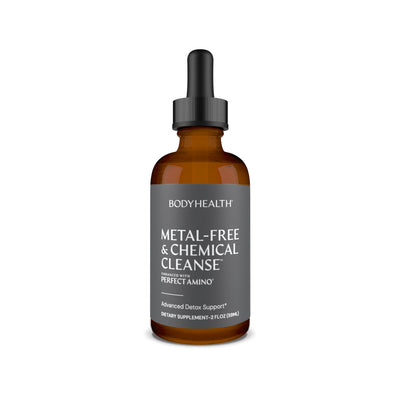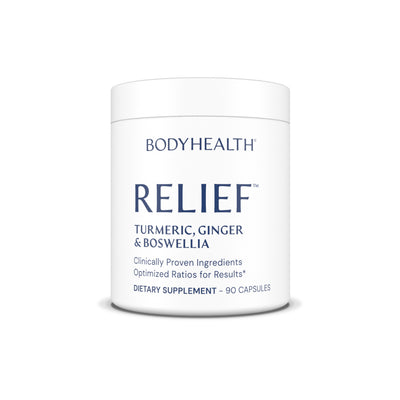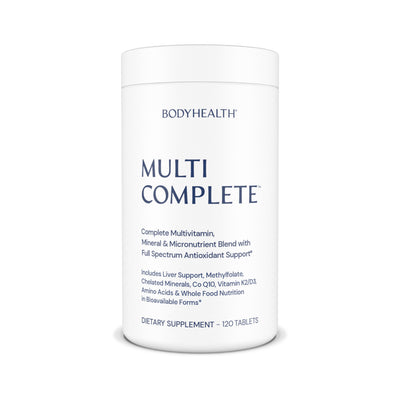How Toxins Create Inflammatory Responses & Raise Stress Levels
April 03, 2025 5 min read

We know that toxins are harmful.
They stress our nervous system, create inflammatory responses in our body, raise cortisol levels, disrupt our hormones, accelerate our aging, contribute to many conditions we see in society today, and even cause trouble for our unborn children, disrupting the process by which both their nervous systems and immune systems form.
In short, they cause our bodies a great deal of stress.
And this stress passes on to us, to our anxiety levels and our mood, whether we know it or not.
As of 2022 there were an estimated 350,000 chemicals used in the world, most of which get into our water supply.
That’s a fifty-fold increase since 1950.
And, according to the CDC, less than 100 of them are regulated by the Safe Drinking Water Act.
But how do these toxins stress our body?
How do they affect our stress levels and mood?
How do they create inflammatory responses?
And how can we prevent this?
HOW TOXINS AFFECT OUR BODIES
Toxins enter the body in many ways: through our food, water and air, but also through personal care products we use and even through our clothes.
Now, inflammatory responses are a natural part of our immune system’s response to toxins, injury, and illness.
When toxins enter, or we’re injured or ill, our body’s immune system responds to remove or kill the intruders, and/or heal the area affected. And inflammatory response is a natural part of this process.
But let’s look at exactly what happens when toxins enter, and how they affect us, as they can harm us in a number of ways:
They can directly damage cells and tissue, triggering an inflammatory response from the immune system to both repair the damaged cells and tissue, but also to address any toxins released by dying cells.
They can also activate our immune system by binding to specific receptors on immune cells or directly stimulating the production of inflammatory molecules called cytokines.
But if that wasn’t enough, these cytokines then recruit and activate other immune cells, keeping the inflammatory response going.
As this isn’t specific to one part of the body, this can affect our whole body, raising creating inflammatory responses throughout.
Some toxins cause the break down of cell tissue, nerve cells and even our DNA through something called oxidative stress.
Oxidative stress normally occurs when too many free radicals (unstable molecules) have built up in cells and there are not enough anti-oxidants (substances that protect cells from free radicals) to address them.
But in this case the toxins themselves are generating the free radicals. And due to the volume of free radicals created, and the low amount of nutrition in our foods these days, our bodies usually do not have enough anti-oxidants to address them fully and protect the cells.
This then results in an inflammatory response.
There is also something called cell signaling, where cells receive “communications” from other substances such as nutrients or hormones. This is necessary for the proper operation and health of the cell.
But toxins can interfere with cell signaling, not only slowing or stopping the cell’s ability to “communicate,” but also leading to the release of inflammatory molecules. This in turn, when carried on daily, can lead to chronic inflammatory responses in the body, where these response are created, or kept created, on a daily basis.
And then, of course, there is the gut. We’re constantly exposed to bacteria through our food and water, and many of these can be harmful.
When our stomach is not acidic enough, as is the case with many people today, causing heartburn, indigestion and GERD, these bacteria are not killed off in our stomach. The acid is too weak to do so.
They then get into our small intestine, where they can take root, and release bio-toxins which harm the cells in the lining of our intestine.
Most people today have many or all of the above situations in their body to one degree or another.
Even more, these toxins can build up in the body, accumulating in the cells and intestinal bacteria, and causing trouble over time.
And we know that an inflammatory response raises cortisol levels which can stress not only our mind, but our body through our nervous system, lowering our ability to lose fat and build muscle, keeping us feeling stressed during the day and making sleep much harder.
As the amount of chemicals coming in today is so much more than just a few decades ago, we need to take proper actions to prevent as much of it coming into our bodies as possible.
STEPS TO LOWER TOXINS ENTERING OUR BODIES
One of the very first things to do is stop eating processed foods.
Many of the ingredients in these foods are hormone disrupters.
Some of these foods even require us to heat them in the microwave with the plastic wrapping still on them. This allows these chemicals to leach from the plastic into the food itself.
Don’t drink from cheap, plastic water bottles. Look for BPA-free plastic water bottles.
Get a reverse-osmosis water filter for your kitchen and only drink from that.
These are the best water filters when it comes to removing these chemicals from our water, something that no city filtration system comes close to doing.
Do your best to eat only organic foods and meats that are 100% grass-fed, or, if not organic, then at least keep away from the Dirty Dozen and look into the Clean 15, fruits and vegetables where chemicals are very minimal.
Look for organic or EWG-approved personal care products that don’t contain harmful toxins. This is a wide area where these chemicals have been given many different names, so keep your eyes open here, looking into each product.
Lastly, we need to both fix the damage done, and repair our body’s ability to remove toxins.
Metal-Free is one of the very best detox products there are, both in effectiveness and gentleness. It even operates as one of the most powerful antioxidants to reverse damage done to cells by these toxins.
Gut Restore addresses both the harmful bacteria and candida that take root in our gut, causing the Leaky Gut which allows these toxins into our bloodstream and body, as well as helping to repair the damage done to our gut by toxins.
Taken along with the Gut Health Protocol, it's very effective.
PerfectAmino allows our cells to regenerate and heal our detox organs.
Probiotic helps build up beneficial bacteria that work to break down these harmful chemicals.
And Multi Complete supports the entire detox pathway and cellular systems.
I highly recommend taking these if you aren’t already. They can be quite effective.
And make sure to join our VIP Group where you can ask any question you have.
I hope this helps.
Articles by Health Topic
Your Path To Better Health Starts Here!
From in-depth articles on nutritional benefits to updates on new product launches, stay informed and inspired on your journey to optimal health.
*These statements have not been evaluated by the Food and Drug Administration. These products are not intended to diagnose, treat, cure, or prevent any disease.











